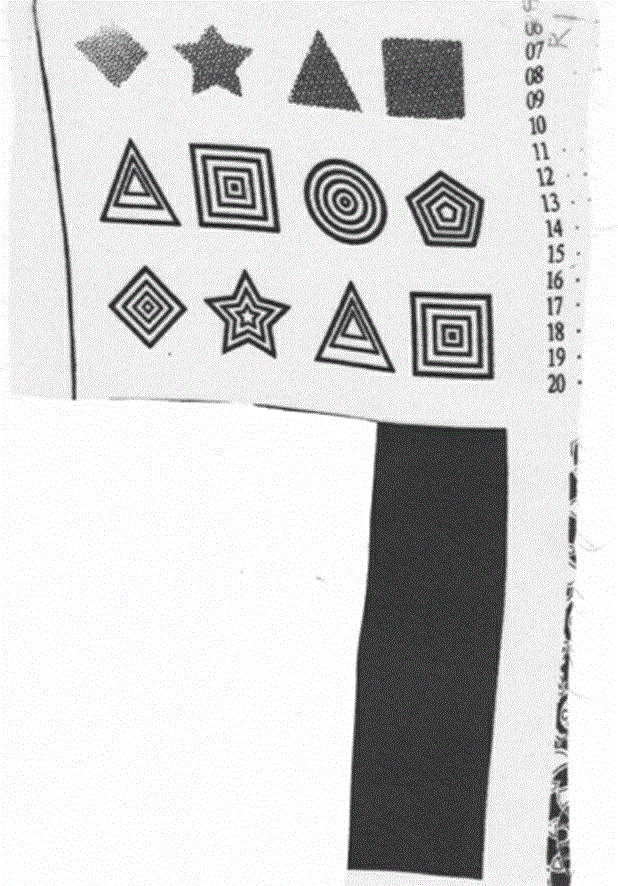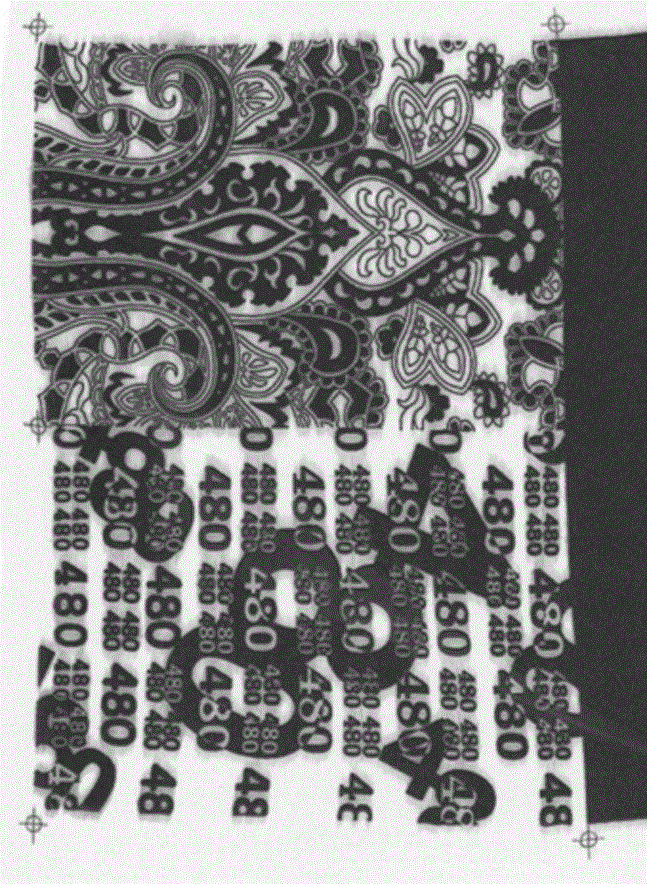Trace amount of printing paste and preparation method and application thereof
A printing color paste and micro-quantity technology, applied in the field of textile printing and dyeing, can solve the problems of low water resource consumption, high COD value, and difficulty in obtaining dark-colored printed products, and achieve low water resource consumption, low sewage discharge, and excellent color fastness degree of effect
- Summary
- Abstract
- Description
- Claims
- Application Information
AI Technical Summary
Problems solved by technology
Method used
Image
Examples
Embodiment 1
[0060] 15g butyl acrylate, 3g ethyl acrylate, 3g acrylonitrile, 0.5g acrylic acid, 0.5g methacrylic acid, 0.5g N-methylolacrylamide, 0.5g 1,4-cyclohexanedimethanol diacrylate, 0.5g Mix bis-trimethylolpropane tetraacrylate, 0.5g emulsifier SP-80, 0.5g sodium dodecylsulfonate, 0.5g isomeric tridecyl alcohol polyoxyethylene ether (12) and 60g water, and fully Stir into an emulsion. Dissolve 1 g of ammonium persulfate in 15 g of water at room temperature and stir thoroughly to form an initiator solution. Take half of the mass of the emulsion and half of the mass of the initiator solution and add them to the reaction device of the three-mouth sesame cake, stir while heating, and raise the temperature to 70°C. When the temperature reaches 70°C, under stirring, slowly add the mixed solution of half of the mass of the remaining emulsion and the mass of the initiator solution at the same time, and the dripping time is 100-120 minutes. After the dropwise addition, the stirring was con...
Embodiment 2
[0063] 15.5g butyl acrylate, 2.4g ethyl acrylate, 2.4g acrylonitrile, 0.4g acrylic acid, 0.5g methacrylic acid, 0.5g N-methylolacrylamide, 0.4g 1,4-cyclohexanedimethanol diacrylate , 0.4g bis-trimethylolpropane tetraacrylate, 0.5g emulsifier SP-80, 0.5g sodium dodecylsulfonate, 0.5g isomeric tridecyl alcohol polyoxyethylene ether (12) and 60g water mixed , and stir well into an emulsion. Dissolve 1 g of ammonium persulfate in 15 g of water at room temperature and stir thoroughly to form an initiator solution. Take one-third of the mass of the emulsion and half of the mass of the initiator solution and add them to the reaction device of the three-mouth sesame cake, stir while heating, and raise the temperature to 72°C. When the temperature reaches 72°C, under stirring, slowly add the mixed solution of two-thirds of the mass of the remaining emulsion and half of the mass of the initiator solution at the same time, and the dripping time is 100-120 minutes. After the dropwise ad...
Embodiment 3
[0066] 14.4g butyl acrylate, 2.5g ethyl acrylate, 3.0g acrylonitrile, 0.4g acrylic acid, 0.6g methacrylic acid, 0.6g N-methylolacrylamide, 0.5g 1,4-cyclohexanedimethanol diacrylate , 0.4g bis-trimethylolpropane tetraacrylate, 0.6g emulsifier SP-80, 0.5g sodium dodecylsulfonate, 0.6g isomeric tridecyl alcohol polyoxyethylene ether (12) and 60g water mixed , and stir well into an emulsion. Dissolve 1.1 g of ammonium persulfate in 14.8 g of water at room temperature and fully stir to form an initiator solution. Take one-third of the mass of the emulsion and one-third of the mass of the initiator solution and add them to the reaction device of the three-mouth sesame cake, stir while heating, and raise the temperature to 70°C. When the temperature reaches 70°C, under stirring, slowly add the mixed solution of 2 / 3 of the mass of the remaining emulsion and 2 / 3 of the mass of the initiator solution at the same time, and the dropping time is 100-120 minutes. After the dropwise additi...
PUM
| Property | Measurement | Unit |
|---|---|---|
| Bending length | aaaaa | aaaaa |
Abstract
Description
Claims
Application Information
 Login to View More
Login to View More - R&D
- Intellectual Property
- Life Sciences
- Materials
- Tech Scout
- Unparalleled Data Quality
- Higher Quality Content
- 60% Fewer Hallucinations
Browse by: Latest US Patents, China's latest patents, Technical Efficacy Thesaurus, Application Domain, Technology Topic, Popular Technical Reports.
© 2025 PatSnap. All rights reserved.Legal|Privacy policy|Modern Slavery Act Transparency Statement|Sitemap|About US| Contact US: help@patsnap.com



